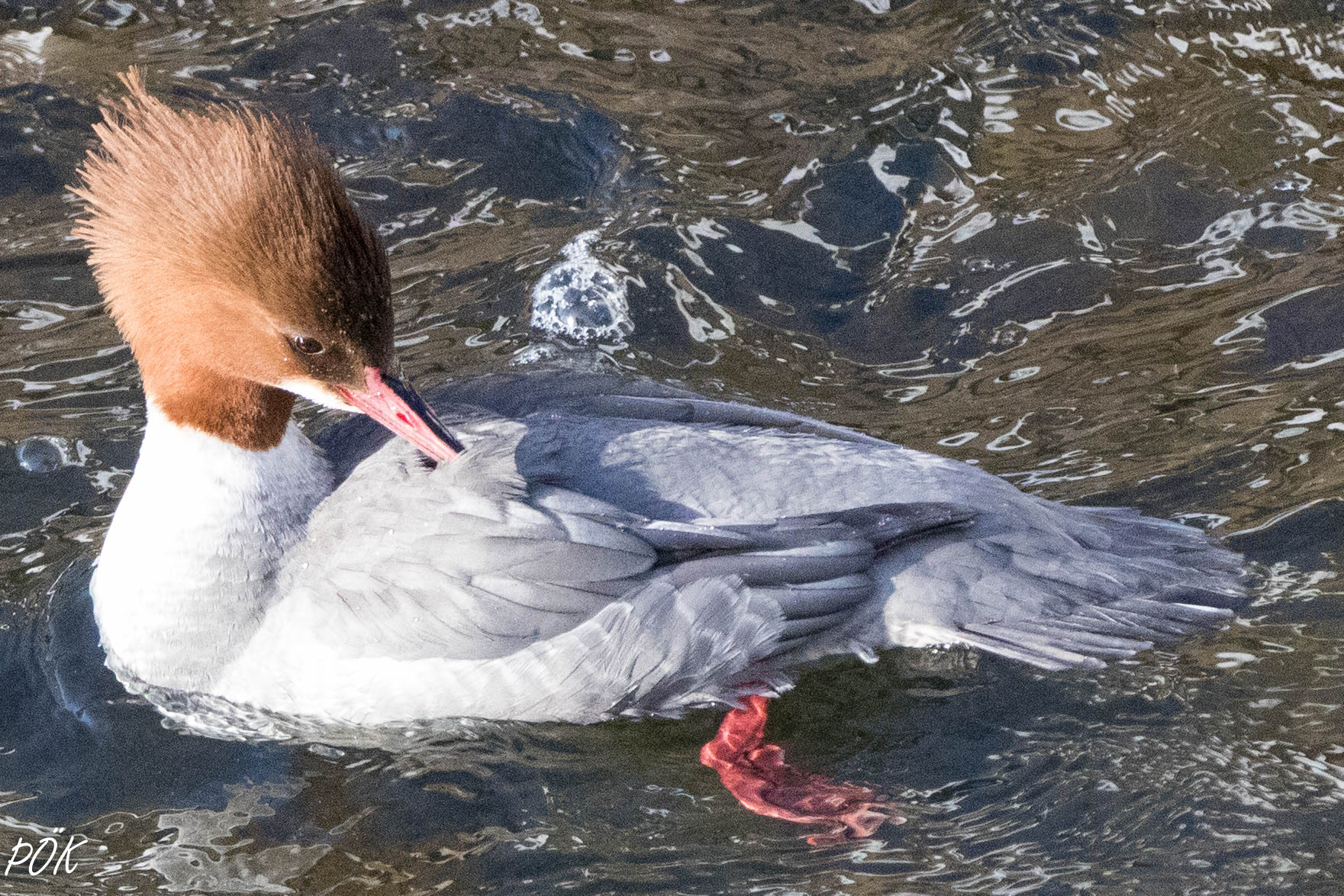The goosander (Mergus merganser), known as the common merganser in North America, is a large piscivorous duck belonging to the Mergus genus. In Iceland also the Red-breasted merganser (Mergus serrator) belongs to this genus. The goosander has also been called the Buff-breasted Merganser or simply the sawbill because of its serrated billedges used for fishing.
A large and beautiful phiscivorous
As within other duck species (Anatidae) the sexes have different colors as the male is more colorful. Male goosander has a dark green head, black back but the tail is gray. There is a distinct color change between the back and the white bottom area.
The female goosander has a brown head and a feather top. The back and sides are grayish but the throat, belly, and wing patch is white.
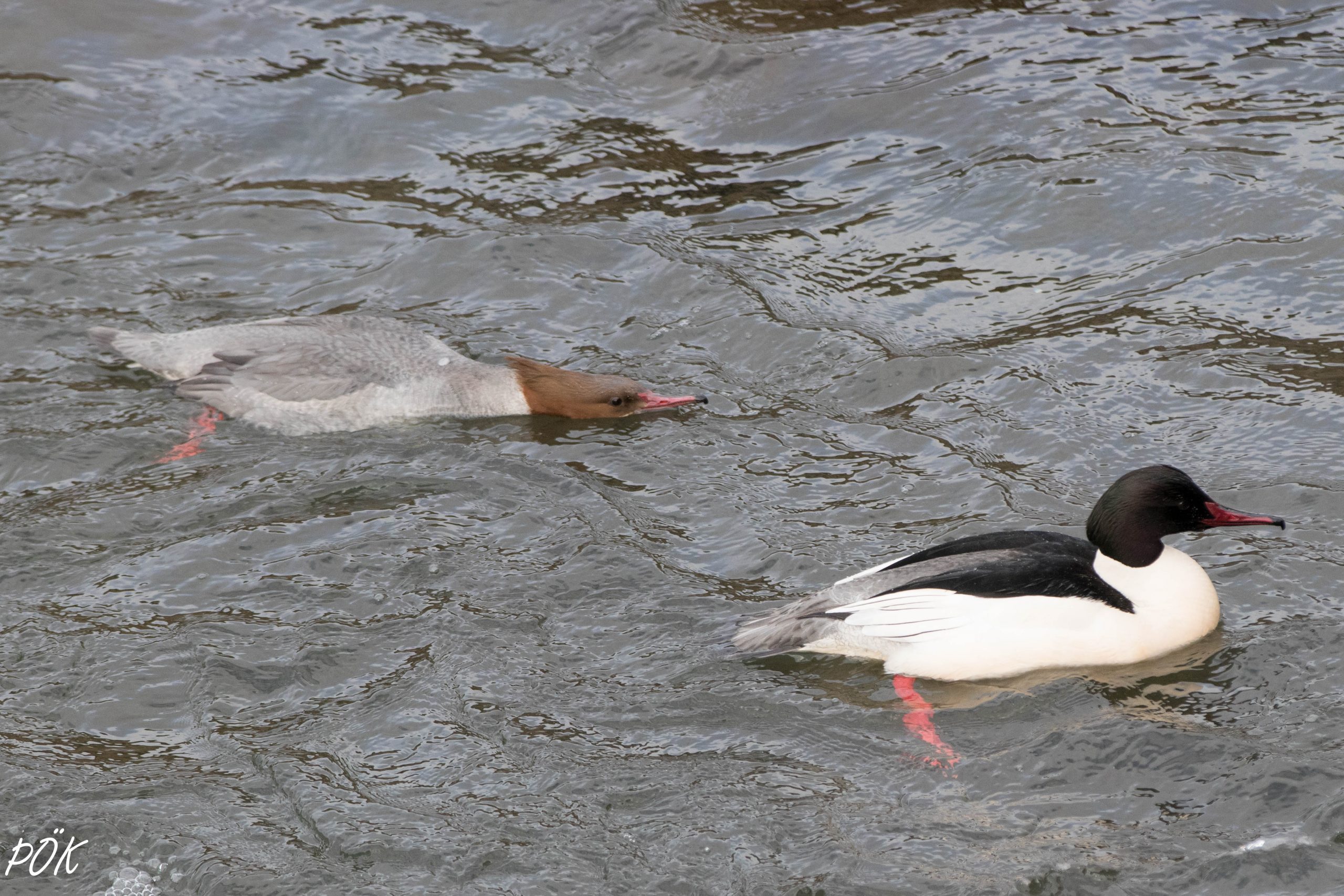
Both sexes have a dark red bill and feet. The bill is long and slender with a hook on the end and sharp sawlike edges to trap fish. The goosander weights 52.9-70.5 oz and is the largest freshwater duck in Iceland. Its length is 22.8-26 in and the wingspan 32.3-38.2 in. This is a fast flier and has been observed at a speed of 43.5 mph.
The Icelandic population is small and scattered over the country
The nests are most often found close to riverbanks of large nutritious streams. The birds hide their nests in holes and all sorts of crevices but also close to human habitats if they find a good place to hide. The population size is poorly known but estimated about 300 nesting pairs. The goosander is partially stationary in Iceland and can be found at the seashore or on unfrozen lakes and streams all over the country during winter.
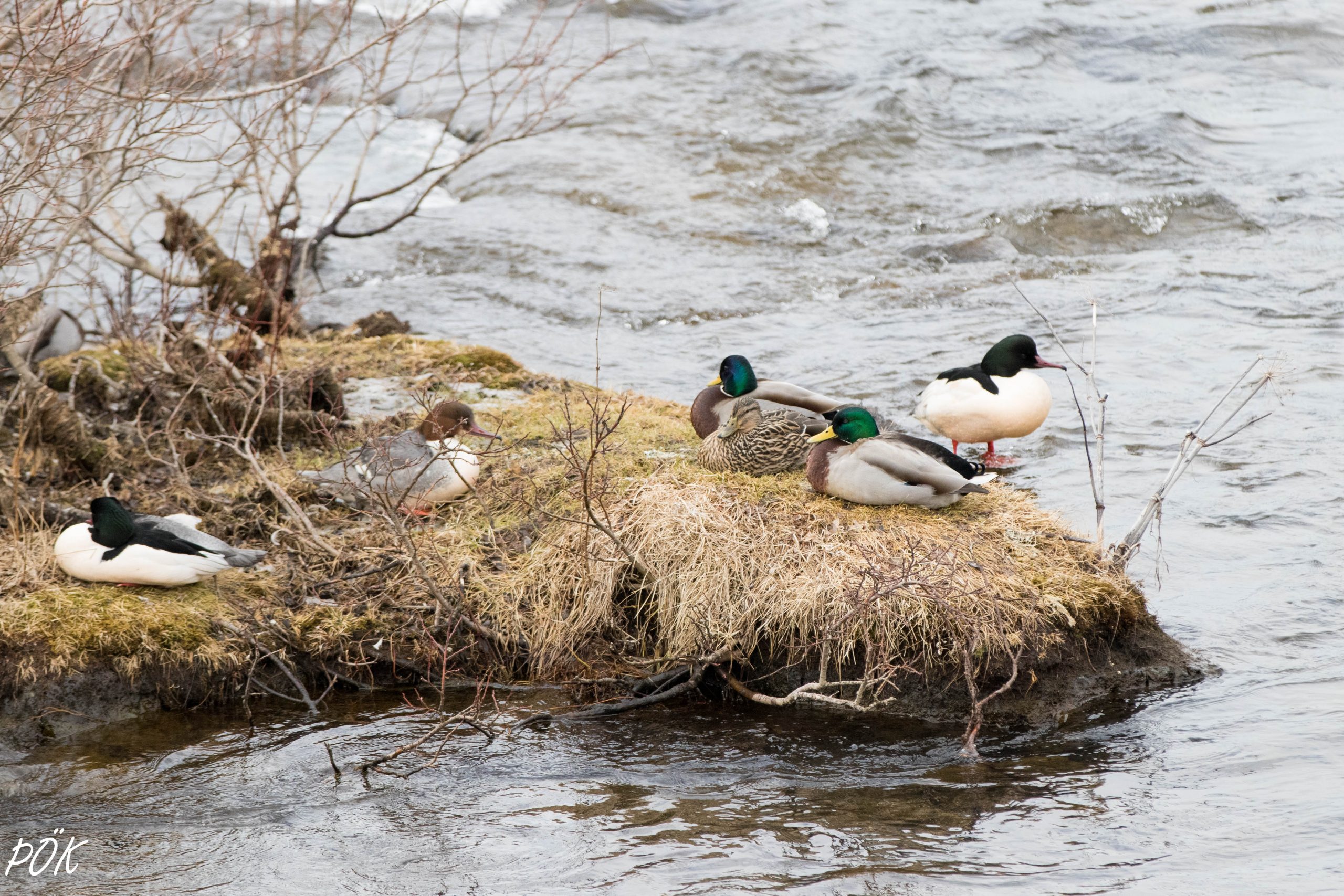
Goosanders are great divers
The goosanders are social birds outside the breeding season and are often seen in small groups. They often hunt together in small flocks, flushing small fish into shoals which they feast on. Goosanders are great divers and can be immersed for 2 minutes. They swim on the surface with their head underwater looking out for fish. When a good catch is spotted they dive and snatch their prey.
Breeding ecology of the goosander
The courtship starts in December and lasts until spring. They pair for one year at a time and stay together until the nesting season is over. As with most other ducks then the male leaves to molt but the female incubates the eggs. Goosanders lay 8-11 creamy coloured eggs that weight about 3 oz each. The nest is insulated with dry grass and down from the bird and the incubation takes about a month.
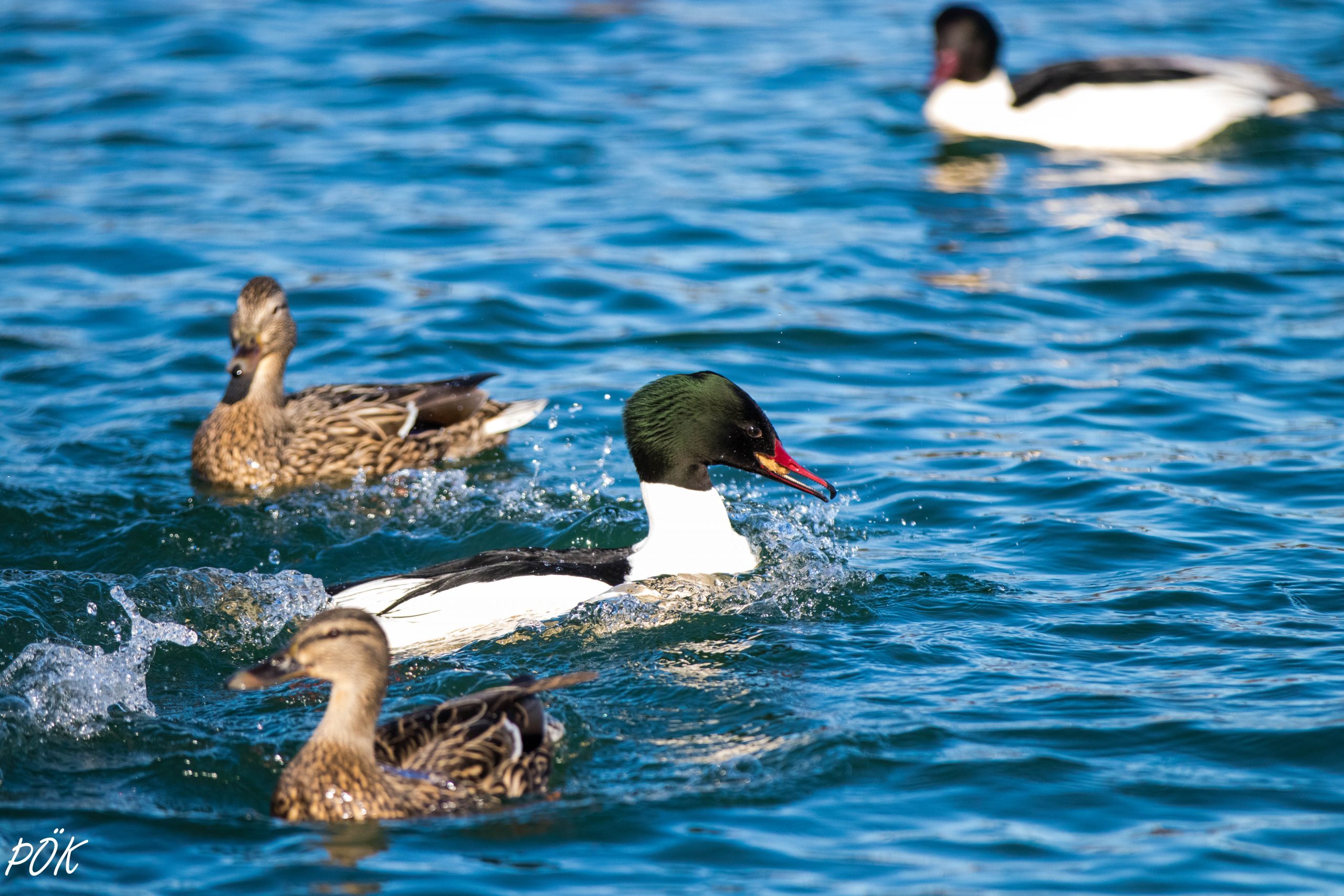
The ducklings hatch precocious and leave the nest only 1-2 days old. They are grayish with a white belly and chin but a brown hood on the head. The female takes care of the ducklings and even carries them on her back if they are tired. The ducklings provide food for themselves and are good divers only one week old. The female leaves the ducklings before they can fly about 2 months old.
The goosander has been fully protected by the law in Iceland since 1966. Among fish breeders, this bird has been unpopular as it hunts juvenile fish from ponds and fish farms.
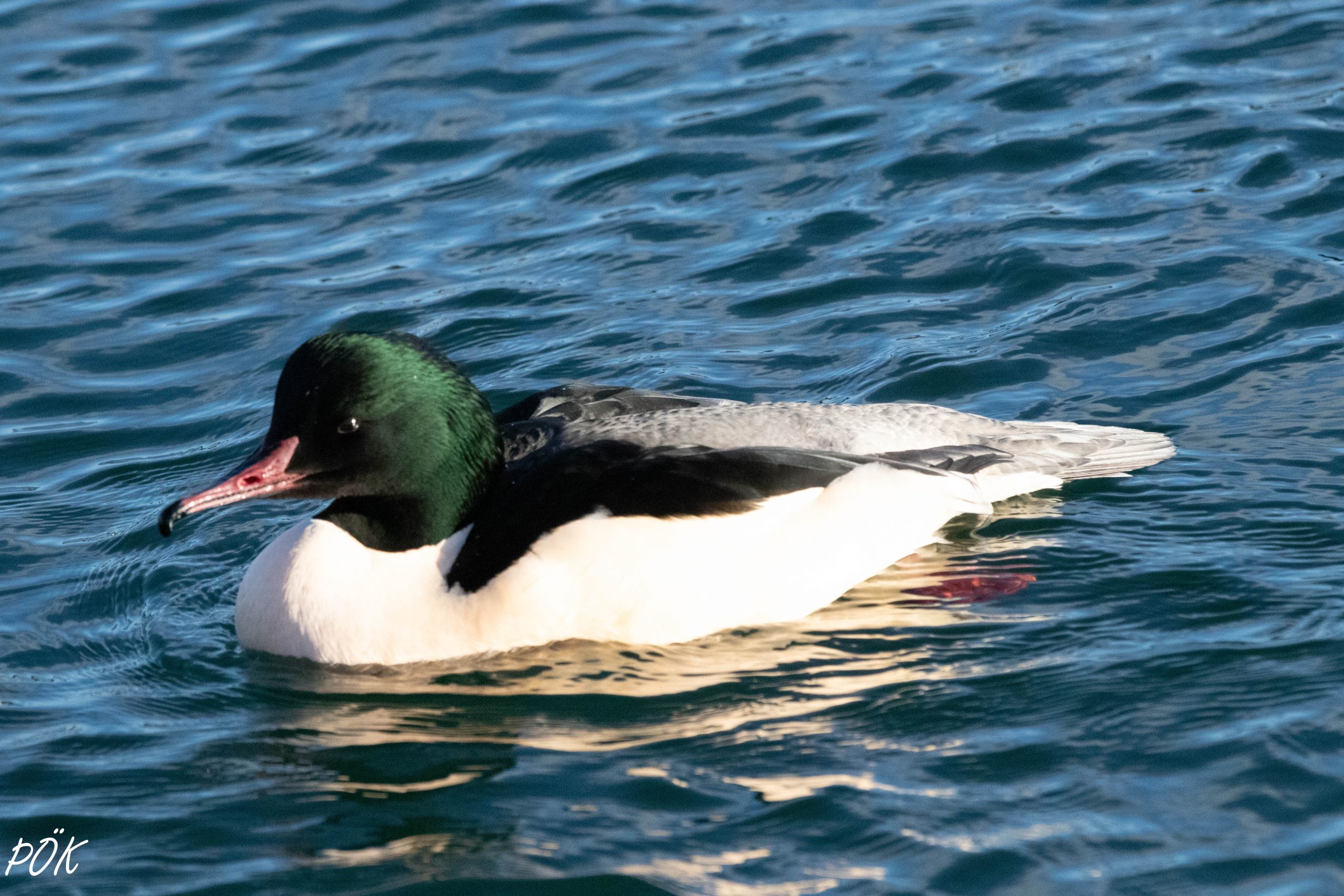
Did you know?
- There are three subspecies of goosanders found in the northern hemisphere. m. merganser is found in Iceland, North-Europe, and North-Asia. M. m. orientalis is found near mountain lakes in Central Asia and M. m. americanus is widespread in North-America.
- The oldest known goosander was 13 years and 5 months old when recovered in North America.
- The goosander is very shy and hides the nest well. Abroad it mostly nests in hollow trees in a distance from the ground but in Iceland in holes and all kinds of crevices.
- Female goosanders are known to rear ducklings from other clutches and have been observed with as many as 50 in a group.
- The goosander becomes sexually mature 2 years old.
Fishing for more information?
Birds of the World has great info
Compare the two species with BirdID
Read more on the Animal Diversity Web
Nature Gate more facts
Great info from the National Audubon Society
Learn about Goosanders on All About Birds
Discover more fascinating Birds
Icelandic Version – Íslenska
Author & Photographer: Dr. Þórður Örn Kristjánsson

